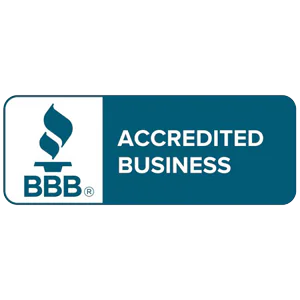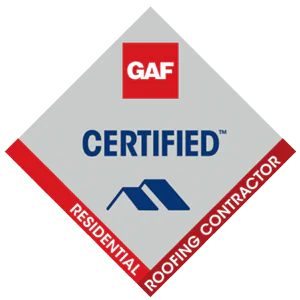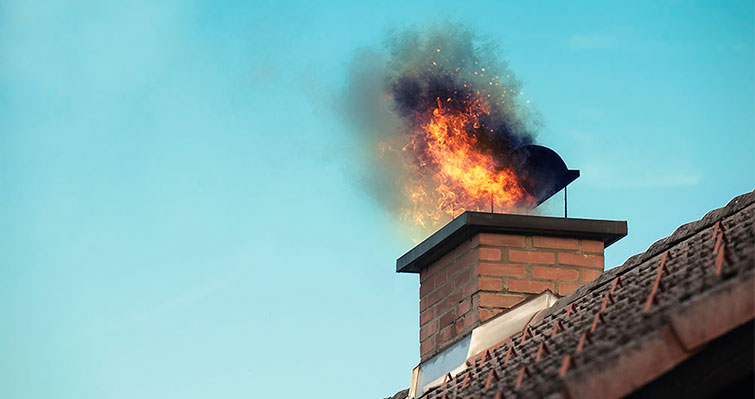
7 Chimney Fire Signs You Should Beware Of
- December 10, 2020
- EA Chimney and Roofing Corp.
Chimneys and fireplaces are one of the most desired features of a home. But, with them comes great responsibility. This is because you have to take care of them to prevent any serious damage. As a result, today, we bring you 7 chimney fire signs that you should beware of.
Most of the time, people don’t realize a chimney fire has occurred. This is because most chimney fires happen quietly and slowly. As a result, people only realize they’ve had a fire until they get their chimney inspected or cleaned.
If you don’t want your chimney to catch fire, then you’ll need regular inspection and cleaning. This is only one of a few tips on chimney maintenance.
For now, let’s continue talking about the signs your chimney had a fire.
These Are the 7 Chimney Fire Signs You Should Know About
As we mentioned before, few people can tell when a chimney fire has occurred. But, you can know when a chimney fire is happening at the moment if you notice any of the following:
- Loud cracking and popping of the flue tiles
- A whistling noise
- Dense smoke rising from the top of the chimney
- A hot, burning smell
If you are experiencing any of this, then you can be sure a fire is happening. But, most of the time, chimney fires are not extreme or loud.
For that reason, you should be on top of your chimney and fireplace cleaning. This is because when you give your chimney proper maintenance, you can prevent terrible fires from happening.
The 7 chimney fire signs are:
- Puffy or honeycombed creosote
- Cracks in your chimney’s flue tiles
- Discolored or warped chimney cap
- Black debris on the roof or yard
- Cracks in exterior masonry
- Damaged roof antenna
- You can’t open the damper
Puffy or Honey Combed Creosote
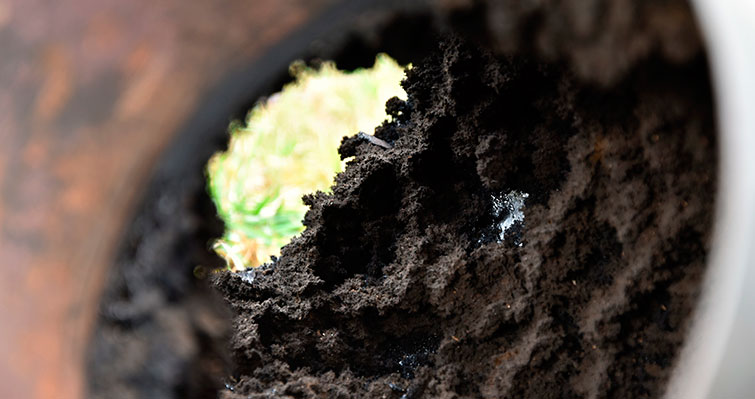
Creosote is an extremely flammable product caused by wood burning. It happens especially when you burn toxic wood in your fireplace. Creosote buildup is one of the main reasons for chimney fires. For that reason, you should only burn the right type of wood.
When you find creosote buildup on your chimney liner, a fire happened some time ago. If you see that there are larger and puffy pieces of creosote, then it’s probably you’ve had several fires.
For this reason, it’s important that you have a professional chimney sweep. You don’t want creosote to keep building up in your chimney that can later result in a fire.
Cracks in Your Flue Tiles
If you’re inspecting your chimney flue and notice some cracks, then you probably had a fire. Cracks in your flue tiles happen when they experience rapid heating and cooling.
You can contact a professional if you’re looking for chimney repair services to fix your cracked chimney flue. Also, you must contact an expert because you’ll need a special chimney camera to spot the cracks in the flue tile.
When your chimney is experiencing a fire, it will create heat of more than 2100°F degrees in just a couple of seconds. So, even if you had small cracks in the flue tiles, they can expand because of the extreme heat. As a result, creosote can start building up behind the liner wall.
Discolored or Warped Chimney Cap
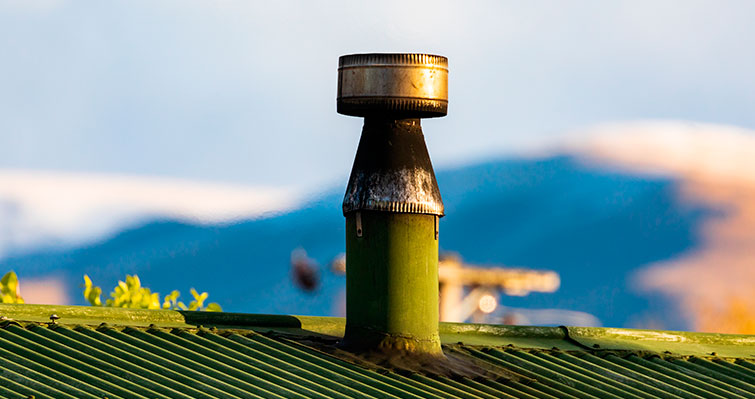
Most chimney caps are made of stainless steel. When your chimney cap experiences extreme heat, it will discolor. As a result, you’ll notice a rainbow-like sheen or reflection.
Your chimney cap can also warp after a fire. When a fire happens, it will distort the screen, which is the weakest part of the cap.
So, if you see your chimney cap is discolored or warped, you most likely had a fire.
Black Debris
You can tell your chimney caught on fire if you notice black debris on your roof or yard. When the heat becomes stronger in your chimney, then the draft will be stronger as well.
When this happens, soot will come out from the top of the chimney. This can land on your roof or your yard.
You need to be careful with this because it could be dangerous. This is because the soot that landed on your roof or yard could start another fire. If you notice black debris, then we recommend calling a professional.
Cracks in Exterior Masonry
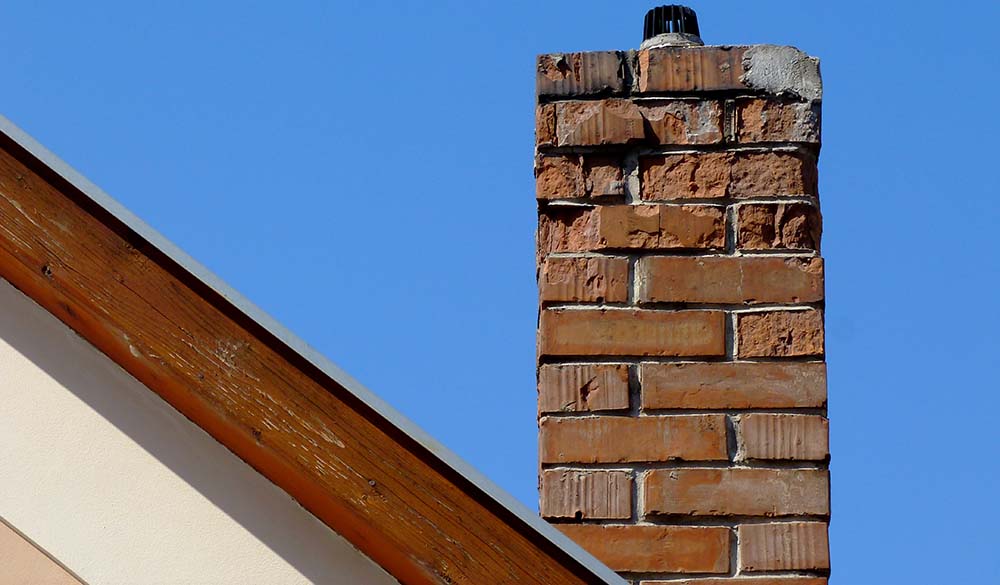
Cracks in the exterior masonry happen for several reasons. Some of them are thermal cracking, improper construction, water damage, and freezing-and-thawing.
We recommend hiring chimney services so that they can tell you the reason behind the masonry cracks.
When thermal cracking occurs it is the result of a chimney fire. It is crucial that you know if the external cracks on your chimney were caused by a fire. This is so that you can give your chimney proper maintenance after a fire.
Damaged Roof Antenna
The extreme heat coming from a chimney fire can cause several damages up on your roof. One of them is a damaged roof antenna. You can go up to your roof and inspect the antenna or satellite dish. If they look scorched, then your chimney caught on fire.
Also, when you notice that some parts of your roof are charred, there’s a big possibility that your chimney had a fire.
You Can’t Open the Damper
Another sign that your chimney had a fire is when you can’t open the damper. A chimney damper is a feature that you open to vent the fireplaces or wood stoves. As a result, you keep smoke out of your home.
The heat from a fire could cause the damper to get warped. If this happens, then it would be difficult for you to open it.
When you notice any of these chimney fire signs, make sure that you talk to a professional right away. They will tell you how severe the fire was by looking at your chimney’s condition.
If you want to decrease the possibility of you having a chimney fire, then keep your chimney in check all the time. Do the routine inspections and sweeps. As a result, you and your family will be safe from any potential fires.


